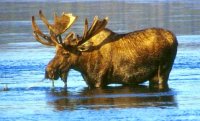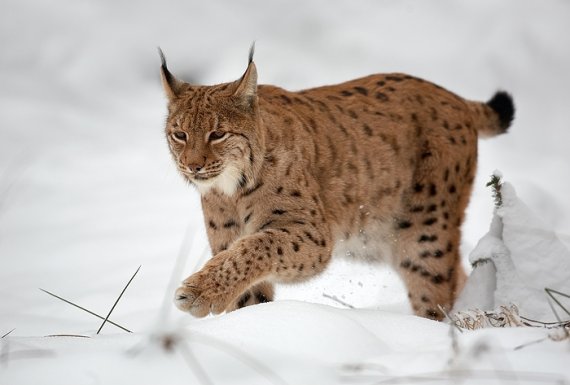Photo: Martin Mecnarowski
Nowadays, Europe is a better place for large predators than decades ago. There are a couple of reasons for this, says Hugh Jansman, who receives rare species that are found dead in the Netherlands on his cutting table. For example not only the animals, but also their habitats are now better protected. And because a lot of agricultural land is becoming unused in especially Eastern Europe, wildlife receives more space. Also in the Netherlands animals which originally occurred here are returning and we will even see new species.
Lynx
There have been reports of lynx in the Netherlands. ‘However, the reliability is questionable’, says Jansman. ‘Yet sooner or later we can expect it.’ In de border region in Germany the populations are growing and in the Netherlands the animal can expect a laid out table.’ Lynx eat hares and deer, which are plentiful at the Veluwe. ‘We are now culling thousands of deer a year,’ says Jansman, ‘thus the lynx would for sure have a positive function.’ The only problems are the many grids and roads that cut through the Netherlands.
Osprey
This bird of prey has passed by in the Netherlands quite frequently and we only have to wait until proof is provided that the species also breeds here. ‘I was actually surprised that the sea eagle was first’, says Jansman. However the ecologist is optimistic that it will soon be time. It would be a positive signal for Dutch nature if the osprey would breed here. ‘It would mean that the waterways have plenty of fish, and that there are enough nesting sites.’
Moose

It is not as if the moose are waiting at the border, but Jansman considers it possible that an individual could end up here. From Poland it has now entered former East Germany and it could come our way in the near future.’ Moose like wet areas; wetlands and fens. Our country, especially the marshy areas around the Oostvaardersplassen, are suitable as habitat. Yet Jansman doubts a successful establishment. Our country has too many roads cutting through for that.
Raccoon and raccoon dog
Not all colonists are always popular. The camera traps that recently captured the golden jackal, have previously seen raccoons and raccoon dogs. It is uncertain to what extend they are released pets. ‘The fact is that these species, and especially the raccoon dog, are quickly increasing in Germany’, says Jansman. Tens of thousands of these animals are culled annually. It is only a matter of time before they establish themselves here, says Jansman. Both species are exotics, introduced by fur farms from respectively North America and East Asia. Ironically, says Jansman, ‘the distribution area of the raccoon dog in Europe is now larger than their original distribution area.’

